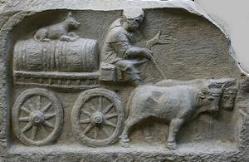- Originaltext:
Naturpark Altmühltal ... Auf der Spitze der Bergzunge stand einst die St. Michaelskapelle, die dem Berg den Namen gab, und von der noch Mauerreste sichtbar sind; das vermutlich schon im frühen Mittelalter erbaute Kirchlein war im 17. Jahrhundert Ziel von Wallfahrten. Im 18. und Anfang des 19. Jahrhunderts hauste neben der Kapelle ein Eremit, bis Kapelle und Klause nach dem Tod des letzten Einsiedlers 1819 abgebrochen wurden.
- Quelle www.tara.tcd.ie/bitstream/2262/3921/1/jssisiVolXII263_294.pdf
MAUL, MEEL. -MAUL is from the Irish meall, " a hill," " hillock," or " eminence." There are over 50 Townlands having this prefix in the Index, as Maulmore, meall mor, great hill." In the Gaelic of Scotland the word is meall, and it forms part of the names of numbers of hills in Scotland, as Mealgarve, " rough hill " (Sutherlandshire). In Manx " a cape," " bare headland," or " top of a hill " is meay
- Quelle wie vor
MULLAGH. -MULLAGH is the name of 24 Townlands, and enters into the composition, as the first part, of over 230 Townland names. It is from the Irish mullach, "a top", "height", "hill " or "summit", as Mullaghroe, mullach ruadh, "red summit". In the Gaelic of Scotland mullach means "the top", "summit" or "upper extremity" of anything, as Mullochard", "high hill" (Inverness-shire). In Manx "a top" or "summit" is mullagh, as Mullaghouyr, "grey or dun top".
- Querverweis, siehe dazu auch
 Mühlberge unter Ortsnamen
Mühlberge unter Ortsnamen
